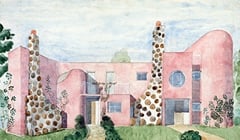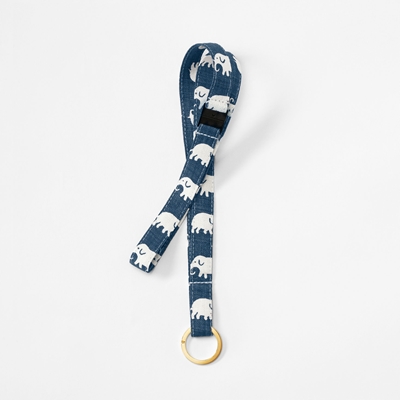Sustainability and manufacturing
Estrid Ericson’s Elephant pattern is rotary screen printed. Rotary screen printing is a technique which is based on colour being pressed, with the help of a perforated cylindrical screen, though a thin mesh which is suspended in a cylindrical frame. One screen is needed for each dye, and the machine in which the Elephant fabrics are printed is approximately 30 meters long.
The fabric is fed beneath the screen with the help of a blanket. The dye is pressed through the perforated screen with the help of a blade from the inside, while the cylindrical screen rotates, and the fabric is printed. After that, the dye has to dry quickly in an oven. The work requires two people, one on each side of the blanket, in order to adjust the settings and control the process. When the printing is finished, it is time to fixate the dyes under steam. Surplus dye must be rinsed off before the fabric is stretched once again. After that, it is inspected before it is ready for delivery.
Rotary screen printing is a form of screen printing that has been developed from a combination of other printing techniques.
Screen printing on textiles has a long history. The printing method was employed thousands of years ago in Egypt, China and Greece, where the “open” sections of the stencil let dye through. In those days, stencils were cut out of leather, greased paper or metal. In order to secure them during printing, they were fastened with thread of silk or hair, which sometimes can be seen on old prints as thin lines between the stencils.
The next step of the development was to stretch a weave of silk onto a wooden frame and then fasten the stencils directly on the weave. The technique spread from China and Japan throughout Asia and reached Europe in the 18th century. It was frequently used for printing exclusive wallpaper on linen or silk. The first photo-based method was introduced in the early 20th century in the United States and revolutionised the technique. William Morris, who inspired many of Josef Frank’s patterns, is one of designers and artists who have worked with screen printing. Roy Lichtenstein, Andy Warhol and Louise Bourgeois are others.
Sustainability in focus
Read more about Svenskt Tenn's Sustainability Philosophy below.













































































